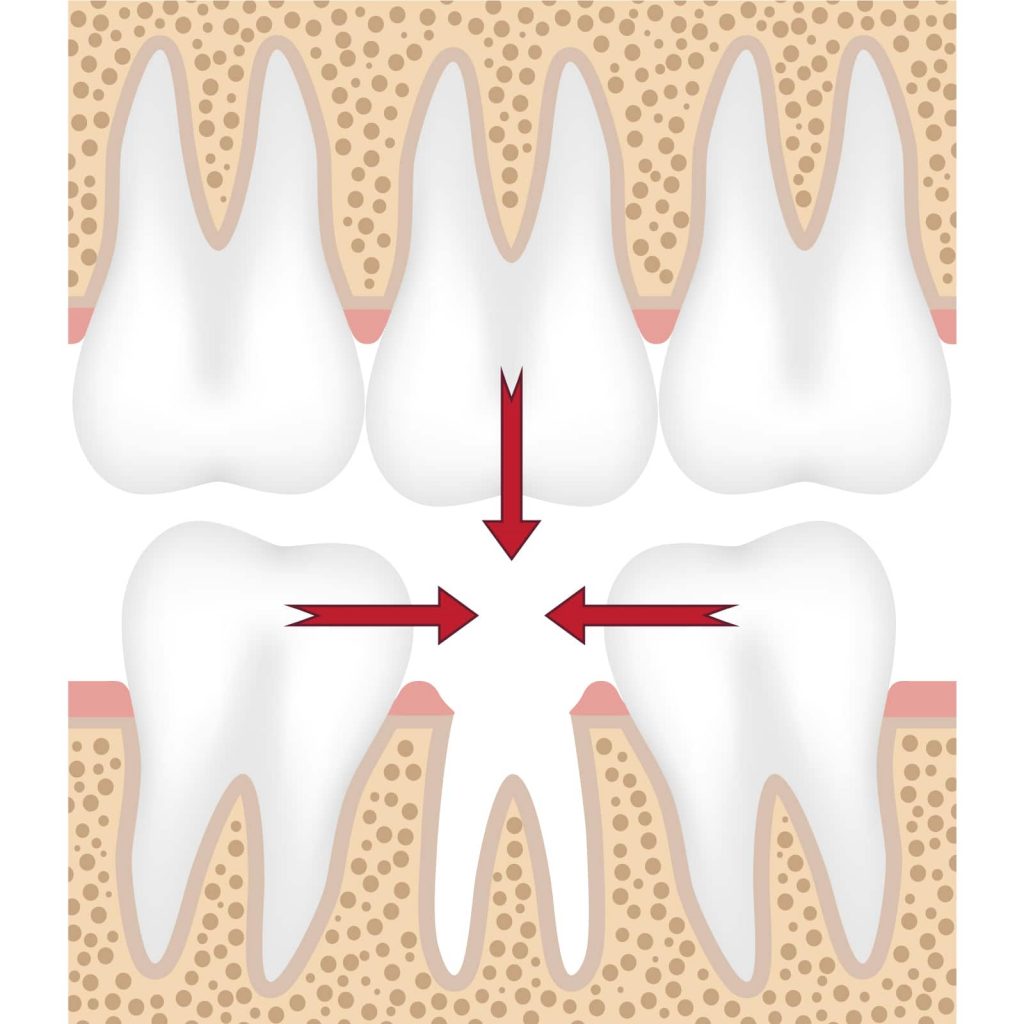Extraction Site Preservation with Bone Graft
Removing a tooth can adversely affect both the structure and function of the mouth, which is why it is often considered only as a last resort where tooth preservation or restoration is not practical or possible. This is also why you should carefully discuss tooth replacement options with your dentist prior to any tooth extraction taking place. For many tooth replacement options, as well as general oral cavity structure and health, your dentist will want to perform extraction site preservation with bone graft immediately following tooth extraction.

How the Oral Cavity is Affected by Tooth Removal
The alveolar ridge bone is a special bone surrounding and supporting your teeth. It relies on the teeth it supports to retain its structure and function, which means that as soon as a single tooth is removed, the ridge bone begins to degenerate. The bone surrounding the socket collapses first, reducing ridge width, before the height of the ridge is lost. This can dramatically affect not only the structure and function of the oral cavity, but also the possibility of receiving replacement teeth in the future.
One of the most successful tooth replacement options is dental implants. These implants are affixed either into or onto the ridge bone, which must be strong in order to support them. Where the ridge bone is weak, implants cannot be placed without first undergoing a bone grafting procedure. While this can be successfully completed in many cases, it is obviously far easier to prevent bone loss from occurring in the first place.
Another tooth replacement option is a fixed bridge. In this case, the natural teeth that are adjacent to the gap created by the missing tooth help to support the replacement tooth, or pontic. While the ridge bone is not necessary for the support of the replacement tooth, its degeneration can create a space under the pontic that will affect speech and trap bacteria and food particles. Still another tooth replacement option is partial or full dentures, which tend to work better if the supporting ridge bone is strong and healthy.
How Bone Grafting Can Help
Your dentist will work very hard during the tooth extraction process in order to ensure the preservation of as much ridge bone as possible. But while this can help, it alone cannot prevent bone degeneration from occurring. Bone grafting, where your dentist adds bone replacement material to the extraction site, can help to slow or even stop the bone loss that normally occurs after tooth extraction, so that whatever future tooth replacement option you select, your bone ridge is strong and healthy enough to support it.
The exact type of extraction site preservation and bone graft you require can vary slightly, which is why your dentist will discuss it with you prior to tooth extraction. Despite the subtle differences in procedures, they all have one basic thing in common: after tooth extraction, the extraction site will be packed with a bone-like material before being covered with an absorbable plug or suture to secure the graft in place. This material will immediately support the extraction site and tooth socket so that it cannot collapse in on itself, and over time it will be replaced by new alveolar ridge bone. With this strong, healthy bone, you will be a prime candidate for future tooth replacement options.
While there is no arguing that extraction site preservation with bone graft is highly successful, it cannot preserve the alveolar ridge bone indefinitely. Your dentist will recommend that you receive a tooth replacement within four to twelve months of the tooth extraction and bone graft procedure so that the bone graft itself does not also degenerate.
For more information about extraction site preservation and bone grafting, contact Dr. Nurminsky today.

